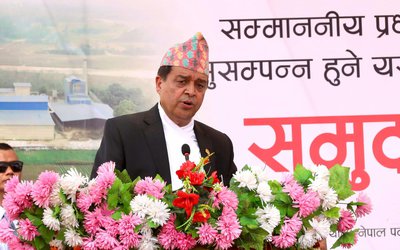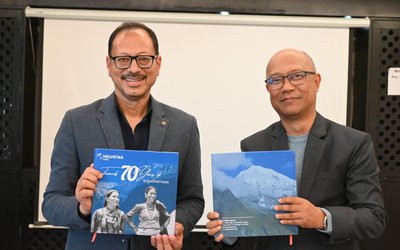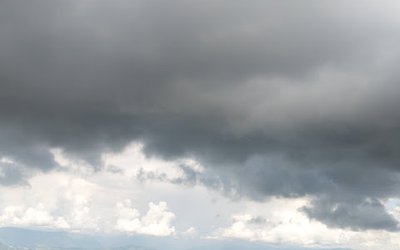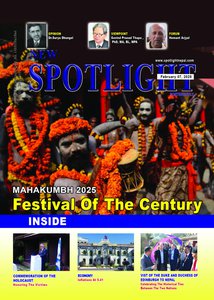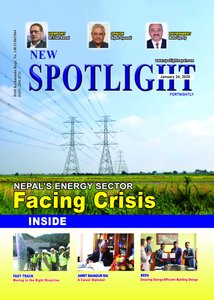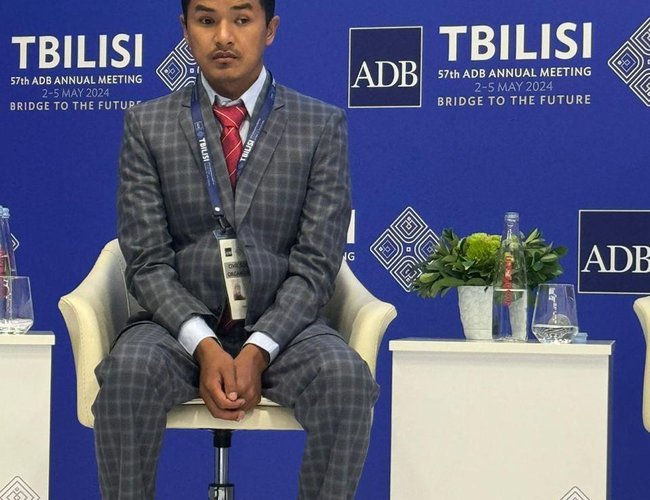
wThe issue of climate change has become an undeniable concern among state parties, development partners, and individuals and communities. As a state party to the UNFCC and other international documents, and by formulating local and national adaptation action plans, Nepal is responsible for enhancing the capacity of Nepalis in adaptation programs and contributing to reducing carbon emissions. It is also expected to qualify for carbon finance for forest conservation, reduced contribution to carbon emissions, and as a developing country.
Major investors and development partners for Nepal, such as the World Bank and the Asian Development Bank (ADB), have expressed their commitment to climate adaptation and mitigation programs. The World Bank's Environmental and Social Safeguards Policy requires that ongoing projects adhere to the principles of environmental justice. Through Investment Project Financing (IPF), the World Bank emphasizes environmental considerations in its manuals. The ADB, which bills itself as a climate-friendly bank, has committed to investing $80 billion by 2030 as part of its Strategy 2030, which may increase with further commitments at the Conference of the Parties.
Throughout the process of climate change discourse and action, certain groups, including persons with disabilities, have been left behind. The vulnerability of persons with disabilities can be compounded by their socio-cultural status, ethnicity, geography and gender. This is an issue not only in Nepal, but also in the Global South, where inclusivity is often ignored, both knowingly and unknowingly.
The theme of this year's Environment Day was land restoration, desertification and drought resilience under the slogan (Our land. Our future). Untimely drought is a major problem facing Nepal. Migration has made our fertile land unproductive and droughts have further threatened food security. The possibility of glacial lake outburst is another major threat to the lives of the people living in the lower reservoirs and local communities. In pursuit of international carbon finance, Nepal has invested in increased forestry. However, without proper wildlife management, the conflict between wildlife and human life has become a disabling factor for people living around national parks, leading to disabilities. Most countries in the Global South lack disaggregated data on vulnerable groups, which prevents state parties and development partners from designing specific programs for them and including them in mainstream programs.
There are ways to make mainstream climate action inclusive and to create specific programs:
First, States Parties should conduct vulnerability mapping to identify the most vulnerable communities affected by climate change, taking into account their multi-faceted conditions. In addition, states and development partners should produce disaggregated data on populations affected by climate change, whether through drought, glacial lake outburst, or other impacts.
Since LAPA is concerned with building the capacity of vulnerable communities, it includes programs related to economic empowerment and other capacity-building efforts, and NAPA facilitates LAPA with the intention of strengthening the capacity of vulnerable groups in adaptation processes. In this regard, LAPA has failed to build the capacity of persons with disabilities. In the adaptation programs, a strategic action plan focusing on disability cannot be observed. Therefore, it is crucial to include persons with disabilities in capacity building programs within adaptation programs by setting indicators and targets.
Carbon finance is one of the most discussed topics in the climate discourse. Advocacy for reaching local communities and their proportional share of climate finance has been widely discussed. However, for persons with disabilities, carbon finance can be used to develop and procure recently developed assistive devices that would improve the physical accessibility of persons with disabilities. In addition, the state should develop and procure digital applications and software to enhance their capacities. As the age is becoming based on the AI model, the state and development partners should focus on the development of artificial intelligence to facilitate and enhance the capacity of PwDs in facing the impacts of climate change and disasters.
Lama is an indigenous youth with disability, functionally blind. Currently working as a consultant in the World Bank. He was participant of EIMUN 2018. He is pursuing a Master’s in development studies.





